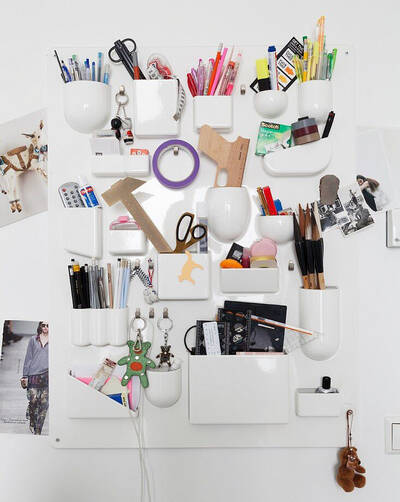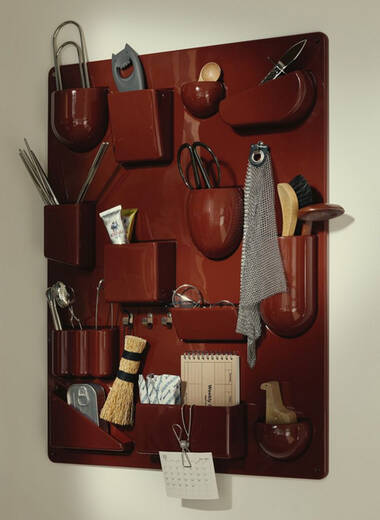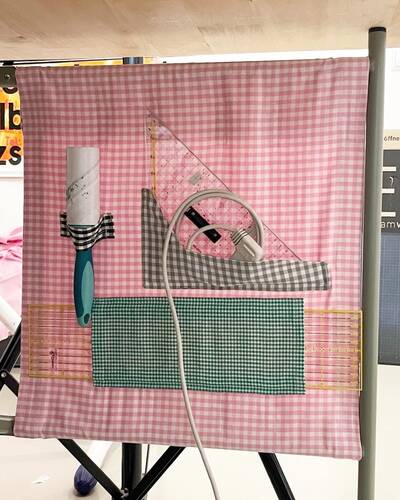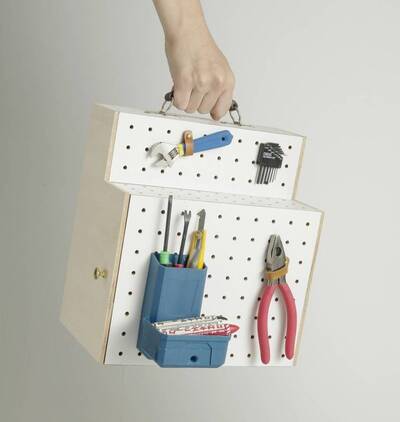This is an old revision of the document!
Organisation Tools/Utensilo
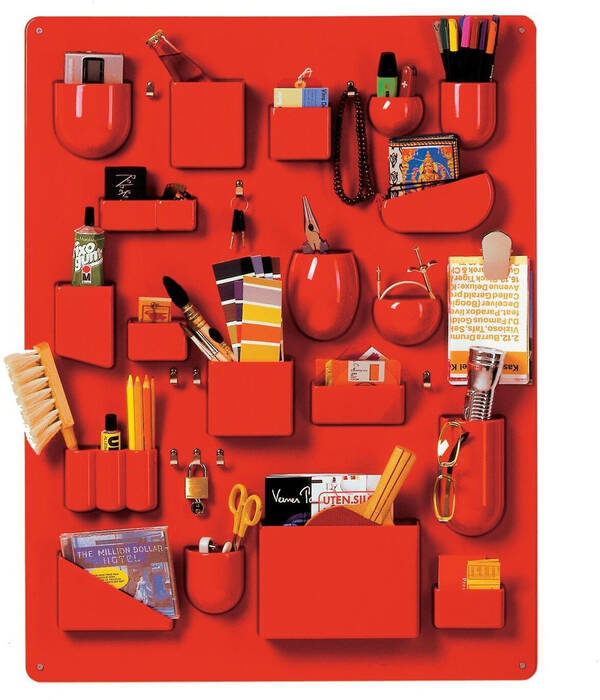 Originally, the Uten.Silo came about by chance. Dorothee Becker, then married to lighting designer Ingo Maurer, was inspired by a wooden toy she designed in 1968, which consisted of a large wooden board with geometric cut-outs and the corresponding counterparts. This idea of modularity and functional storage of things originally placed in a vertical structure later found its way into the design of the Uten.Silo. The design was first presented at the Frankfurt Trade Fair in 1969 and immediately caused a sensation.
Originally, the Uten.Silo came about by chance. Dorothee Becker, then married to lighting designer Ingo Maurer, was inspired by a wooden toy she designed in 1968, which consisted of a large wooden board with geometric cut-outs and the corresponding counterparts. This idea of modularity and functional storage of things originally placed in a vertical structure later found its way into the design of the Uten.Silo. The design was first presented at the Frankfurt Trade Fair in 1969 and immediately caused a sensation.
Today, the Uten.Silo is a true cult object and an icon of functional design. For many people, it is not only a practical organising system, but also a pop-culture object that reflects the aesthetics and culture of the late 1960s. In recent years, the product has experienced a renaissance and can be found in many modern homes and offices. But the success of the Uten.Silo is more than just the result of clever design. It is also a story of innovation, inspiration and the combination of art and functionality.
(Source: Design Bestseller)
IDEA
Contrary to my love of organisation tools/systems I am a very unorganised person but the idea of a thing having it's designated place in a system feels very pleasing, like watching an oddly satisfying video of things matching perfectly. The ideal victim for any reorganisation could be the studio space of each degree at HfG. Especially the Eiermann desks, the design is so simple but there is no possibility to store something on or unter it.
/In 1953, Egon Eiermann designed a metal table for work in drawing rooms and architectural offices, which was manufactured by the Max Meier company and in the metal workshop of the TH Karlsruhe. It consisted of two side sections that were welded together by a spatially tilted cross to form a rigid table frame. A simple wooden board was placed on the frame and served as a drawing surface. In 1965, Klaus Brunner, one of Egon Eiermann's assistants, suggested a transportable version of the table frame when he moved to Freiburg. Adam Wieland, head of the metal workshop at the Technical University of Karlsruhe since 1963, further developed Egon Eiermann's table frame by tilting the diagonally arranged cross struts vertically and connecting them to the side sections in a detachable manner. Production of the table frame began in the same year.
Since the construction of the tables is so minimalistic there is so much you can do with it. Add cupholders, hooks, fabric sides, cpu holders, trashcans, metal grates or fabric storage. Whatever you can think of you can add it to the frame.
I'd really like to add some modular storage to the sides of the frame maybe using snaps, eyelets or hook-and-loop. Something easy so others are able to replicate it if they want. Maybe printing a pattern/plan for the build would be a nice add-on.
